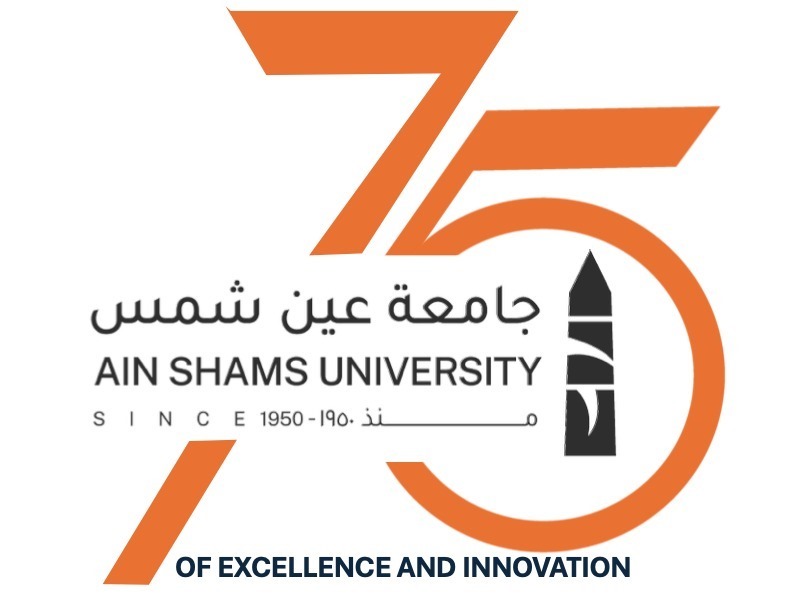The Ministers of Higher Education, Scientific Research, Tourism and Antiquities and the President of Ain Shams University inaugurated the Zaffran Palace Museum at the university
Dr. Ayman Ashour, Minister of Higher Education and Scientific Research, Dr. Ahmed Issa, Minister of Tourism and Antiquities, and Dr. Mahmoud El-Meteini, President of Ain Shams University, on Monday morning, opened the Zaffran Palace Museum on the main campus of the university, in the presence of Dr. Awad Tajuddin, Advisor to the President for Health and Prevention Affairs, Dr. Khaled Al-Anani, former Minister of Tourism and Antiquities, and Dr. Mamdouh El-Damaty, former Minister of Antiquities and supervisor of the museum, Prof. Ahmed Okasha, President of the Egyptian Psychiatric Association, Prof. Abdel Fattah Saoud, Vice President for Education and Student Affairs, Prof. Ayman Saleh, Vice President for Postgraduate Studies and Research, Prof. Ghada Farouk, Vice President for Community Service and Environmental Development, the ambassadors of Italy and Slovenia, a group of university leaders, former ministers, ambassadors and public figures.
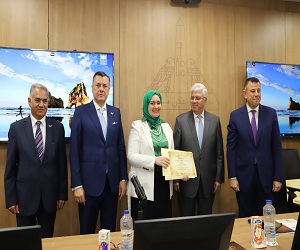 |
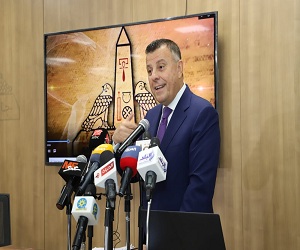 |
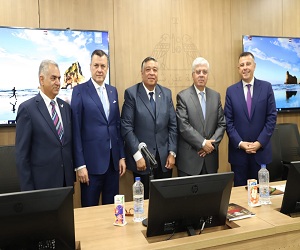 |
||
In his speech, Prof. Ayman Ashour confirmed the pioneering enlightening role of Ain Shams University in spreading thought and culture, as one of the ancient Egyptian universities that we are proud of the achievements it has achieved in all scientific fields.
The minister drew attention to the great historical value of the Saffron Palace as an architectural masterpiece, appreciating the step taken by Ain Shams University to maximize the utilization of the buildings and facilities it owns and revive its role, calling for repeating the experience in all educational institutions by exploiting its construction potential and achieving integration between them to enhance their educational and cultural capabilities, and intensifying interest, and a special focus on the ancient buildings and assets owned by universities.
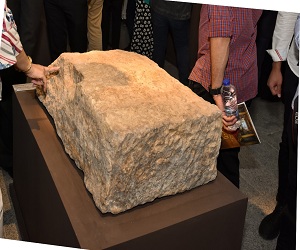 |
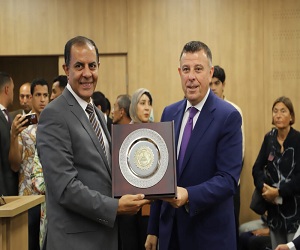 |
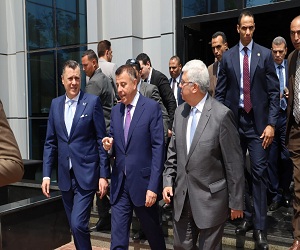 |
||
The minister also noted the role of universities in introducing students to the history and civilization of ancient Egypt, feeding their minds with knowledge and sound understanding to confirm their belonging, and spreading awareness of Egyptian antiquities and introducing them to them, indicating that the cultural and enlightening role of the university is no less important than the educational role, and that higher education policy focuses mainly on Building the human being in all scientific, educational and cultural aspects.
The minister praised the efforts made to implement the museum, thanking everyone who contributed to this work.
Mr. Ahmed Issa, Minister of Tourism and Antiquities, expressed his happiness at being inside Ain Shams University, this ancient educational edifice, referring to his graduation from it, as it is one of the important and most prominent educational stations in his life.
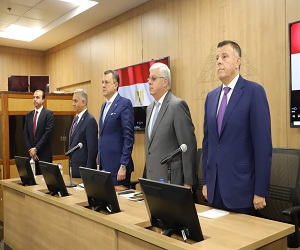 |
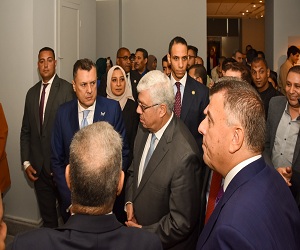 |
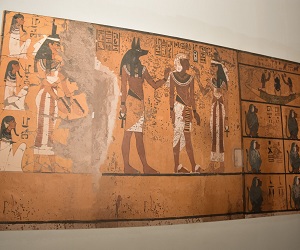 |
||
Noting that the inauguration of this ancient palace, which is a unique architectural masterpiece and a witness to the modern history of Egypt.
He pointed out that the establishment of this museum came in light of the cooperation protocol signed between the Supreme Council of Antiquities and Ain Shams University a few weeks ago to highlight the features of the ancient Egyptian civilization and spread tourism and archaeological awareness among Egyptian youth.
He added that visiting this museum will not be limited only to Ain Shams University students, but also researchers and scholars from various Egyptian universities will be allowed to visit it to learn about the artifacts displayed in it, as it will provide them with a distinct experience that tells and reflects the richness of Egypt's great history and ancient civilization by displaying 167 artifacts from various historical periods, from ancient Egyptian times to the modern era, in addition to a group of artifacts from the excavations of the Egyptian archaeological mission of the university working in the Arab Al-Hosn area, which narrates part of the history of the Ain- Shams archaeological area from its inception to the present day.
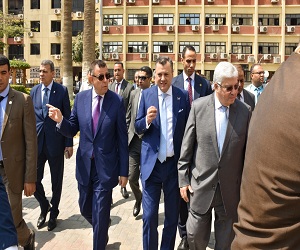 |
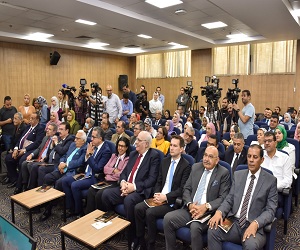 |
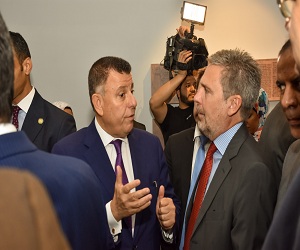 |
||
He also stressed the great interest the Egyptian state attaches to the antiquities file in light of the enormous archaeological treasures that Egypt enjoys, which was evident in the opening of a number of new antiquities museums by the Ministry of Tourism and Antiquities during the past few years and the reopening of another group of museums that had been closed previously for the purpose of development, this is in addition to the National Museum of Egyptian Civilization and the Grand Egyptian Museum, which is scheduled to open soon, which are independent economic bodies, explaining that museums are educational institutions and an important means of exchange and enrichment of different cultures and learning about the past and linking it to the horizons of the present and the future.
He also noted the current project to restore the Saffron Palace, which is currently being completed under the supervision of the Supreme Council of Antiquities, and the importance of the role played by the Supreme Council of Antiquities towards archaeological sites and museums in Egypt as an owner, operator, and scientific institution, and its role in preserving the great Egyptian antiquities, as well as providing a tourism product befitting the greatness of ancient Egyptian civilization.
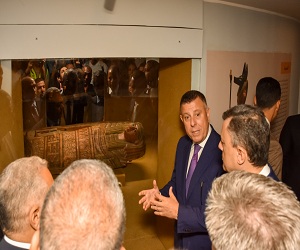 |
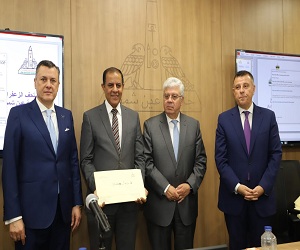 |
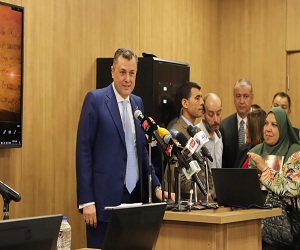 |
||
In his speech, he talked about the number of archaeological sites and antiquities museums that exist in Egypt, pointing out that these sites and museums face some challenges, including the financial difficulties experienced by the public expenditure budget of the Supreme Council of Antiquities. Based on this, the ministry aims to reorient, increase and raise the efficiency of public spending programs, especially which are regarding development museums and archaeological sites in Egypt, in a way that contributes to increasing what it receives and what it deserves in terms of spending on the one hand, as well as receiving the visitor and tourist what he deserves from a distinguished tourism experience in a way that befits the status of Egypt and its tourism and archaeological capabilities on the other hand.
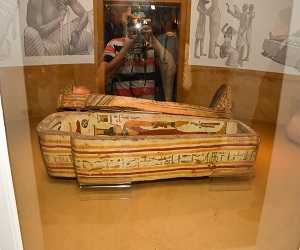 |
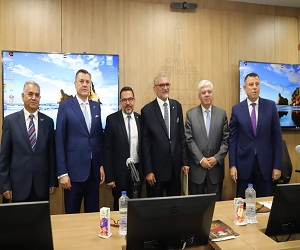 |
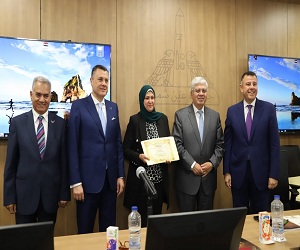 |
||
The Minister of Tourism and Antiquities also stressed the importance of concerted efforts to maximize the council's revenues, diversify its revenue sources, and enhance growth opportunities and investment spending.
During his speech, Mr. Ahmed Issa congratulated Dr. Khaled Al-Anani, the former Minister of Tourism and Antiquities, on the honor of choosing Egypt to nominate him for the elections for the position of Director General of the United Nations Educational, Scientific and Cultural Organization (UNESCO) as a candidate for the Arab Republic of Egypt.
At the end of his speech, His Excellency greeted and thanked the university administration for its interest in this ancient palace and its continuous and fruitful cooperation with the Ministry of Tourism and Antiquities, stressing that the ministry is always pleased with scientific cooperation with Egyptian universities in the field of tourism and antiquities.
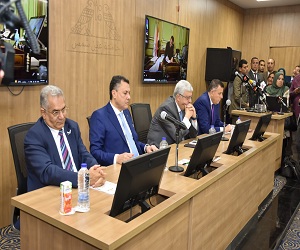 |
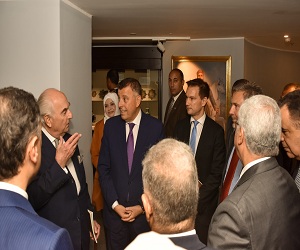 |
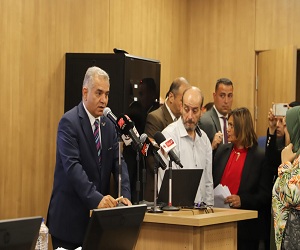 |
||
For his part, Prof. Mahmoud El-Meteini, President of the University The university is keen to revive the role of the ancient historical Zaffran Palace and to mention the greatness and history of this palace, which witnessed a number of important historical events, including the signing of The Treaty of 1936, the Charter of the League of Arab States, from which the universities of Cairo and Ain Shams were administered for a short period, explaining that the idea of the museum came in keeping with the process of restoring the palace with the aim of presenting it in a new way as a cultural and archaeological destination befitting its history, which dates back to the era of Khedive Ismail in 1901 AD, as well as issuing a book about the palace Pointing out that the next stage will witness the establishment of an open museum that includes the first floor to the basement floor of the Zaffran Palace.
He also expressed his pride in the large presence of public figures, leaders and alumni of the university, which reflects the status of Ain Shams University, which is considered the oldest university on earth. Its origins go back to Iono University in the age of ancient Egypt, and he thanked all parties that contributed to the implementation of this work, from the Faculty of Archeology, Engineering and the consulting office of the Faculty of Engineering, as well as the Arab Contractors and Nile Valley companies.
He pointed out that the museum will not be limited to students, and the visit will be opened to the public, in addition to playing a training role as an educational museum for students of the Faculty of Archeology.
And Dr. Mamdouh El-Damaty, former Minister of Antiquities and supervisor of the museum, presented a presentation of the history of the Zaffran Palace, the contents of the museum and the steps for its establishment, noting that a group of holdings were borrowed from the Supreme Council of Antiquities, which are related to the history of the palace and the history of Ain Shams University, to be included in the museum, as well as the borrowing of holdings from the Kafr El-Sheikh Museum pertaining to Muhammad Ali Family History.
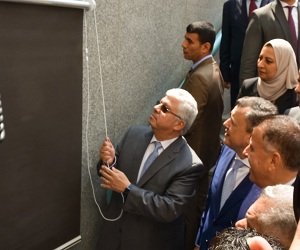 |
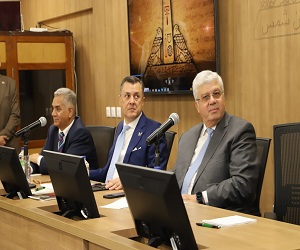 |
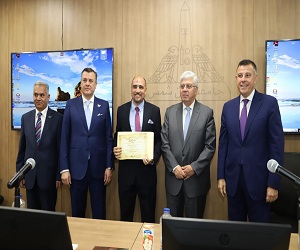 |
||
On the sidelines of the inauguration, Dr. Mostafa Waziri, head of the Supreme Council of Antiquities, and Dr. Hisham Tamraz, former Vice President of Ain Shams University for Community Service and Environmental Development, the Arab Contractors Company, and the participants from the Supreme Council of Antiquities and the Faculty of Archeology, were honored for their role in implementing the museum.
The working group of the Supreme Council of Antiquities, Gamal Sami, Deputy Secretary-General of the Supreme Council of Antiquities, was also honored. The honoring of the group of the Faculty of Archeology was received by Dr. Eman Naseer, Director of the Center for Rudimentary Studies and Inscriptions, the honored group included Mr. Sameh Al-Masry, Director of the Museum Consulting Arkan Company for preparing the scenario for the museum show, Mrs. Jihan Mahmoud, Film Responsible Documentary museums sector, Prof. Muhammad Ismail, a teacher at the Department of Museums and Archaeological Sites Management, Dr. Walaa al-Din Badawi, director of the Zaffran Museum.
Prof. Mostafa Waziri, Secretary General of the Supreme Council of Antiquities, Prof. Hisham Tamraz, former vice president for community service and environmental development, Prof. Yasser Megahed, Director of the Consultation Center at the Faculty of Engineering, Eng. Tariq Khader, Chairman of the Board of Directors of the Arab Contractors Company, responsible for the project, were also honored.
It is worth noting that the museum includes a distinguished collection of exhibits, including; The facade of the gate of the cabin of Prince "Neb Maat Ra", the son of King Ramses IX, during the period (1125-1107 BC), and he held the position of high priest of the sun (Wer Mao) in the Temple of Ra in (Iono), and a statue of Imhotep made of bronze, and a base Of alabaster, dating back to (the Twenty-sixth Dynasty - the Sawy age), and a human coffin of wood decorated with religious scenes to protect the deceased dates back to (the twenty-sixth Dynasty - the Sawy age), in addition to a group of pottery, made by "Ghibi al-Taurizi," the leading potter during the Mamluk age, century (8 AH / 14 AD),
The museum also includes a collection of medals, decorations, and commemorative medals for the Kingdom of Egypt, dating back to the era of the family of Muhammad Ali Al-Qarn (1314 AH / 1920 AD).
The museum includes display screens, and offers virtual tours through interactive applications on historical topics, and holograms.
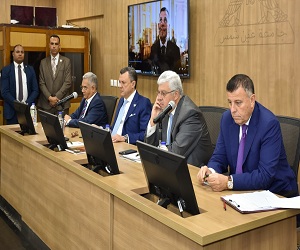 |
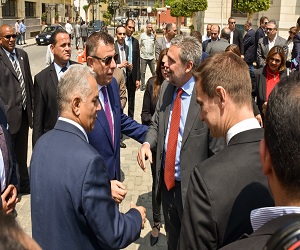 |
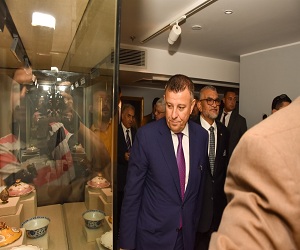 |
||


.svg)
